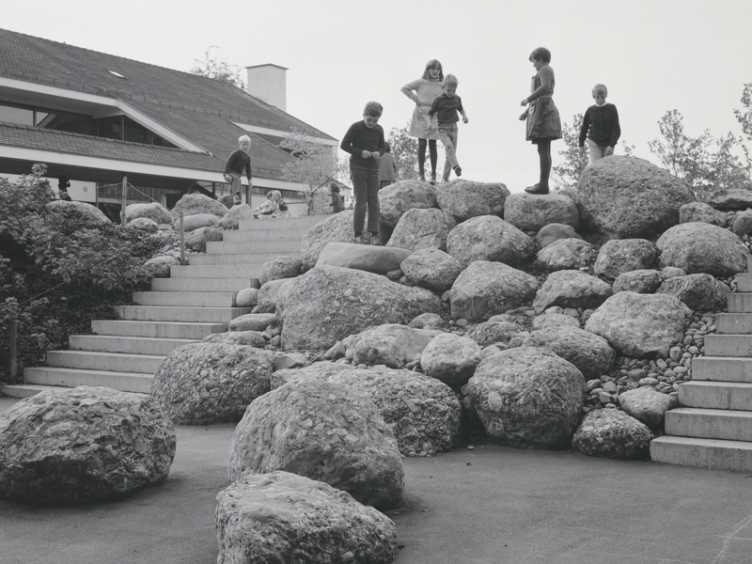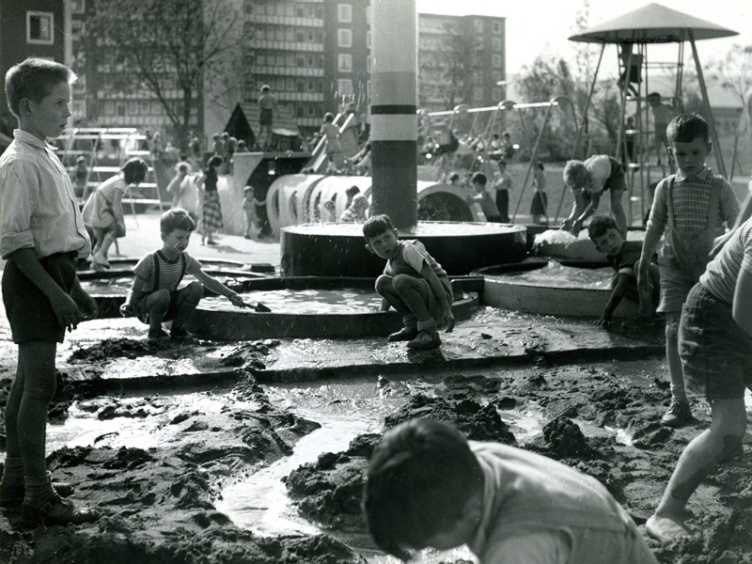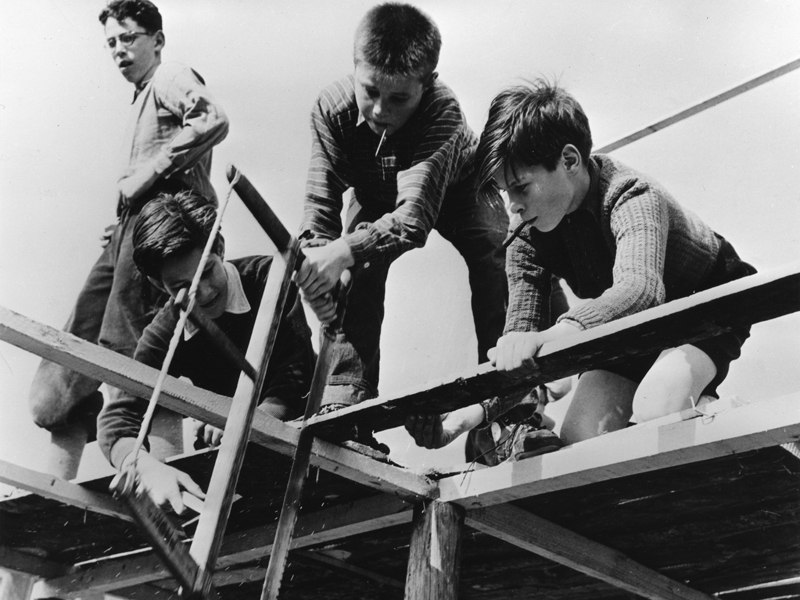Zurich’s playgrounds through time
The gta exhibition ‘Architecture for Children: Zurich’s Playgrounds’ presents the history of the playground in Zurich since 1950. A treasure trove of photos, films, slideshows and plans are on display, along with examples of how children would design a playground today if they had the opportunity.
Swings, slides and seesaws – up to the Second World War, playgrounds for children consisted mostly of the same isolated pieces of equipment. The playground has always been an expression of pedagogical concepts and ultimately adults’ perspective towards the user; i.e. children. As early as the 1930s, Scandinavian designers sought to promote child-friendly play and active creativity. In Switzerland, however, it was not until the post-war baby boom and the concurrent construction boom that playground design benefited from fresh thinking. This is the focus of the exhibition, which presents numerous documents from the 1950s onwards and shows the types of playground that found enduring popularity over the years.
Playful spin on democracy
Questions about education and recreation were the subject of hot debate in the 1950s. Rebellious teenagers unsettled a whole generation of parents, who were anxious to ensure that their children did something sensible with their free time. According to Gabriela Burkhalter, curator of the gta exhibition, the consequences of this trend are clearly evident: “Playgrounds were designed not as a passive form of entertainment, but so children could play actively and creatively.” A playground movement was even formed in Zurich under the leadership of former Pro Juventute president Alfred Ledermann. Outstanding examples of this school of thought include the Robinson playgrounds and community centres – supervised facilities that promoted artistic activities such as drama, building and crafts. Children were encouraged to shape their own environment: an old car, for example, could serve as the stimulus for intensive role-play games. In addition, children could be taught Swiss values in a playful way. “There was high degree of improvisation in these play areas. The children had to organise things for themselves, practise democratic principles and find a consensus,” says Burkhalter.
Strictly ordered or a social mix

At that time, school playgrounds were designed according to different criteria, forming a second focus of the exhibition. In those days, educational considerations governed the design of playgrounds, which blended in with the clear, simple architecture of the schools of the era and assumed a stricter, more ordered character. Nevertheless, there was still some experimentation with new elements. Blocks of all shapes and sizes served as climbing boulders, water became a playful component in the playground and impressive school gardens were created.

Playscapes also began to form in housing development playgrounds. Influenced by social housing, these playgrounds were to serve as the melting pot in which all social classes and generations mixed with one another. The focus was on the shared experience, as can be seen in the excellent photos of Heiligfeld village playground. As this phenomenon is little known, the exhibition deliberately pays attention to municipal playgrounds.
Looking for adventure
The exhibition ‘Architecture for Children’ is not limited to playgrounds from the 1950s – it also traces the social and urban developments of recent decades, from the concrete play sculptures in the 1960s to the nature playgrounds of the 1980s to the present. The organisers of the exhibition also called on children to submit their own photos and drawings of their favourite playgrounds or ones they would like to see in the future, and these are displayed alongside the historical documents. And where do today’s children enjoy playing the most? “They like to be surrounded by nature. And they want a challenge, an adventure, maybe even a little bit of danger,” laughs Burkhalter.
Exhibition
The exhibition ‘Architecture for Children: Zurich’s Playgrounds’ is open from Thursday 6 November to Wednesday 10 December 2014. Mon-Fri, 10 am to 6 pm; closed on Sat/Sun and holidays.
Location: ETH Zurich, Hönggerberg, HIL building, gta exhibitions.

Comments
No comments yet